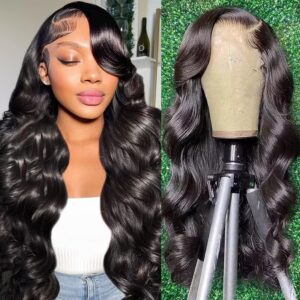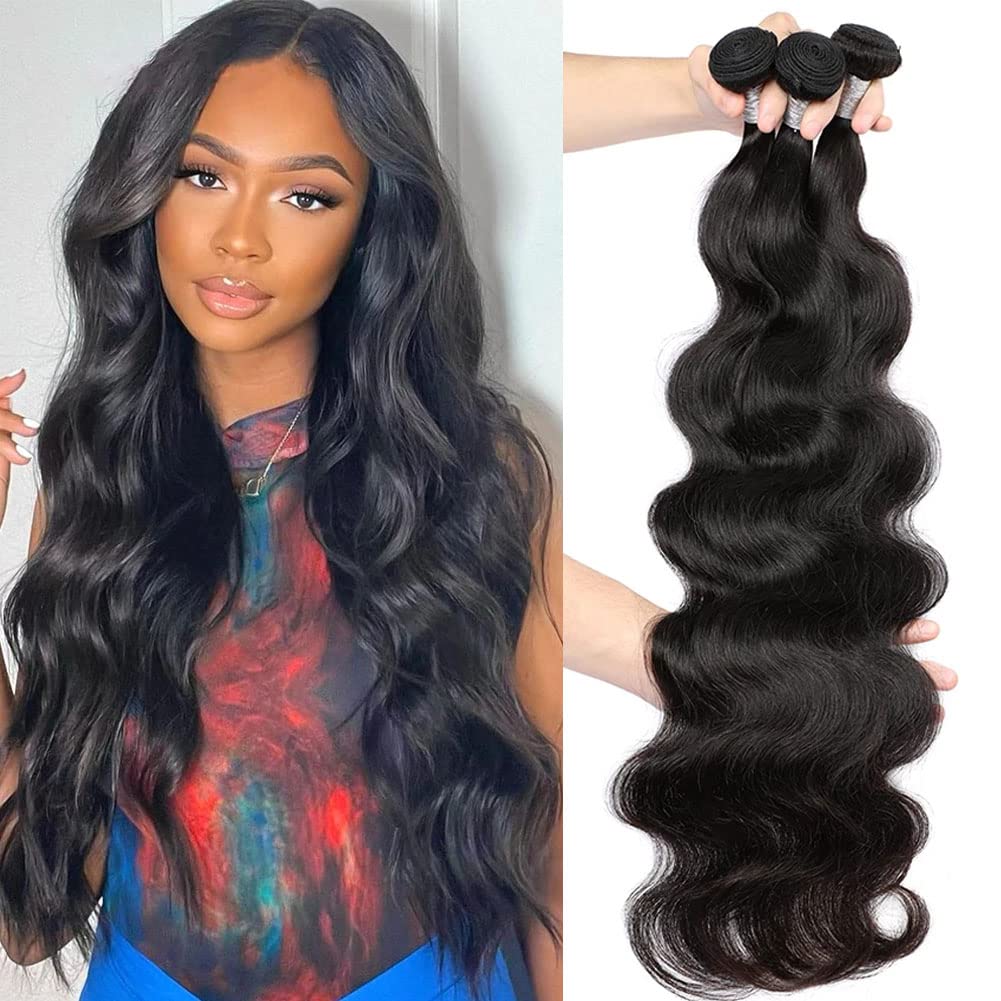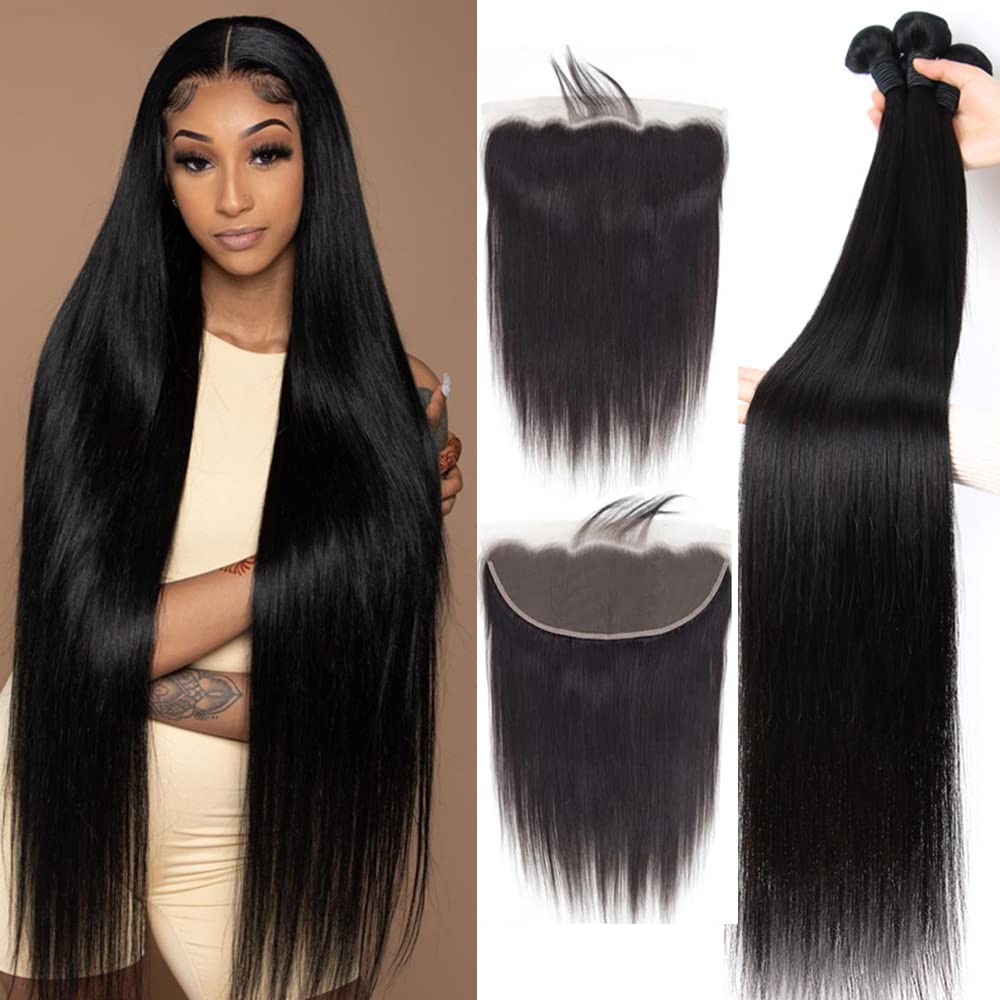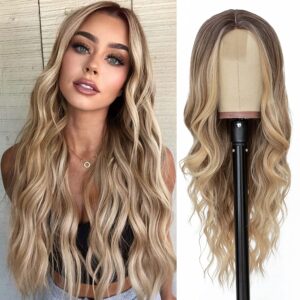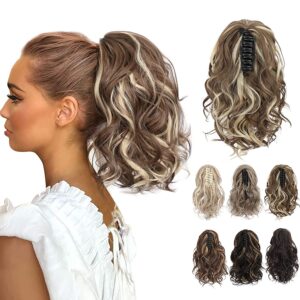The Importance of Maintaining a Tangle-Free Wig
A well-maintained wig is not just about aesthetics; it’s a reflection of self-care and confidence. Tangles can mar the appearance of even the most luxurious wigs, making them appear unkempt and dull. Beyond aesthetics, tangled wigs can cause discomfort and even damage the wig fibers. By keeping your wig tangle-free, you ensure it consistently looks its best, allowing you to present your most confident self to the world.
The Impact of Proper Detangling on the Wig’s Longevity and Appearance
Proper detangling is more than a beauty routine; it’s a longevity strategy. Tangles left unaddressed can lead to irreversible damage, causing breakage and thinning of the wig. Regular, gentle detangling ensures the wig retains its shape, shine, and texture, extending its lifespan. Additionally, a tangle-free wig is easier to style and manage, offering more versatility in your daily looks.
Purpose of the Article
The purpose of this comprehensive guide is to empower wig wearers with the knowledge and techniques needed to maintain tangle-free wigs. By offering step-by-step instructions, tool recommendations, and expert insights, this article aims to make wig detangling a straightforward and effective process, ultimately enhancing both the appearance and durability of your cherished wigs.
Understanding Wig Materials
Overview of Common Wig Materials
Wigs are crafted from various materials, including synthetic fibers, real human hair, and blends of both. Synthetic wigs are cost-effective and low-maintenance. Human hair wigs offer a natural look and styling versatility. Blend wigs combine the benefits of both, balancing affordability and authenticity.

How Different Materials May Require Specific Detangling Approaches
The choice of wig material greatly influences detangling techniques. Synthetic wigs require gentle, cautious brushing to avoid fiber damage. Human hair wigs can withstand heat styling but demand extra care to maintain their luster. Blend wigs need a balanced approach, ensuring both the synthetic and human hair components remain in good condition during detangling. Understanding these distinctions is crucial for effective wig maintenance.
Essential Tools for Detangling
Proper tools are essential for successful wig detangling
- Wig Brush
A wig brush with soft, flexible bristles is gentle on synthetic fibers and helps prevent damage.
- Wide-Tooth Comb
A wide-tooth comb is suitable for human hair wigs, reducing the risk of hair breakage.
- Detangling Spray
A quality detangling spray aids in easing knots and tangles, making the process smoother.
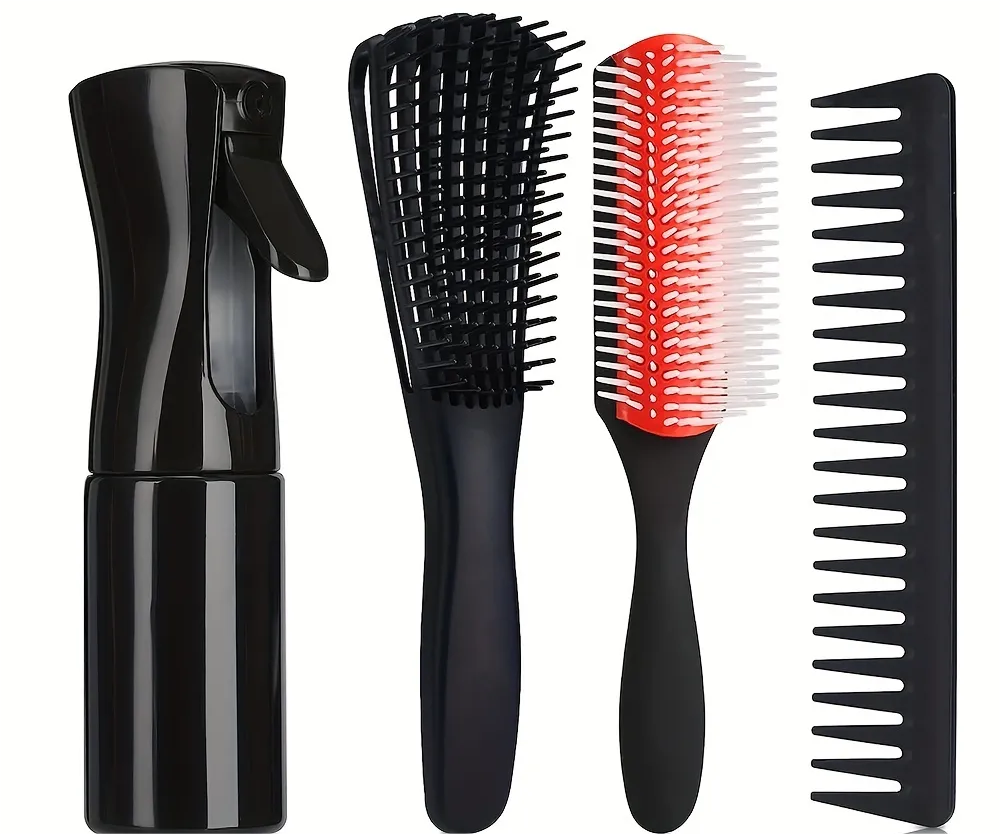
Tips for Choosing the Right Tools for Your Wig Type
- Consider Material
For synthetic wigs, opt for brushes designed specifically for synthetic fibers. For human hair wigs, a natural-bristle brush is preferable.
- Tooth Spacing
Choose a wide-tooth comb with adequate spacing for synthetic wigs, preventing fiber snagging. For human hair wigs, a comb with finer teeth is suitable.
- Detangling Spray
Select a detangling spray suitable for your wig material. Synthetic wigs require synthetic-friendly sprays, while human hair wigs can use general detanglers or conditioners. Read product labels for compatibility.
Preparing the Wig
Pre-detangling Inspection and Assessment
Before embarking on the detangling process, conduct a thorough inspection of the wig.
- Check for Knots and Tangles
Identify areas with knots or tangles, noting their severity.
- Assess Fiber Condition
Examine the wig’s overall condition, looking for signs of wear or damage.
- Evaluate the Wig’s Styling
Assess the wig’s styling, including its part and style, to determine how you want it to look after detangling.
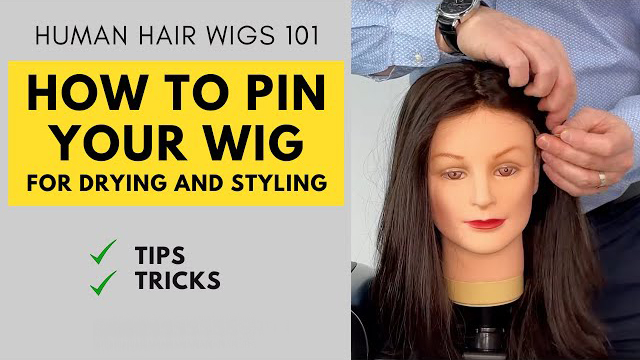
Securing the Wig on a Wig Stand or Head to Ease the Process
- Wig Stand
Place the wig on a wig stand that matches your head size to maintain its shape and make detangling more manageable.
- Wig Head
If a wig stand is unavailable, consider using a wig head or mannequin for stability.
- Securing with Pins
Use T-pins to secure the wig onto the stand or head, ensuring it stays in place during the detangling process. This allows you to work with both hands, facilitating a more effective and efficient detangling experience.
Step-by-Step Detangling Techniques
How to Approach Mild Tangles and Knots
1. Start by gently separating the tangled strands with your fingers, working from the tips towards the base.
2. Use a wide-tooth comb or a wig brush specifically designed for your wig material.
3. Begin combing at the tips and work your way up, using short, gentle strokes.
4. Apply a small amount of detangling spray to stubborn tangles to ease the process.
Dealing with Severe Tangles and Matting
1. For severe tangles, apply a generous amount of detangling spray and allow it to sit for a few minutes to soften the knots.
2. Gently work on one small section at a time to prevent further matting.
3. Use your fingers or a wide-tooth comb to slowly separate the strands.
4. Be patient and avoid tugging or pulling, as this can damage the wig.

Demonstrating Gentle, Gradual Strokes for Effective Detangling
1. Always use gentle, slow strokes when detangling to prevent damage to the wig fibers.
2. Hold the wig near the base to provide support while you comb or brush.
3. Gradually work your way through the tangles, starting from the tips and moving upwards.
4. Continue until the entire wig is smooth and free of knots.
Addressing Specific Areas (e.g., Nape, Crown) with Care
1. Pay special attention to areas prone to tangles, like the nape and crown.
2. Use your fingers to feel for knots and gently work through them.
3. Apply extra detangling spray to these trouble spots if needed.
4. Be cautious and patient, as these areas can be more susceptible to damage due to friction and rubbing.
Using Detangling Products
Exploring Wig-Friendly Detangling Sprays and Conditioners
- Look for detangling sprays and conditioners specifically formulated for wigs. These products are designed to be gentle on wig fibers and won’t leave a residue or weigh the wig down.
- Consider silicone-based products, as they provide slip without damaging synthetic fibers or human hair. Silicone sprays create a protective barrier against friction and static.
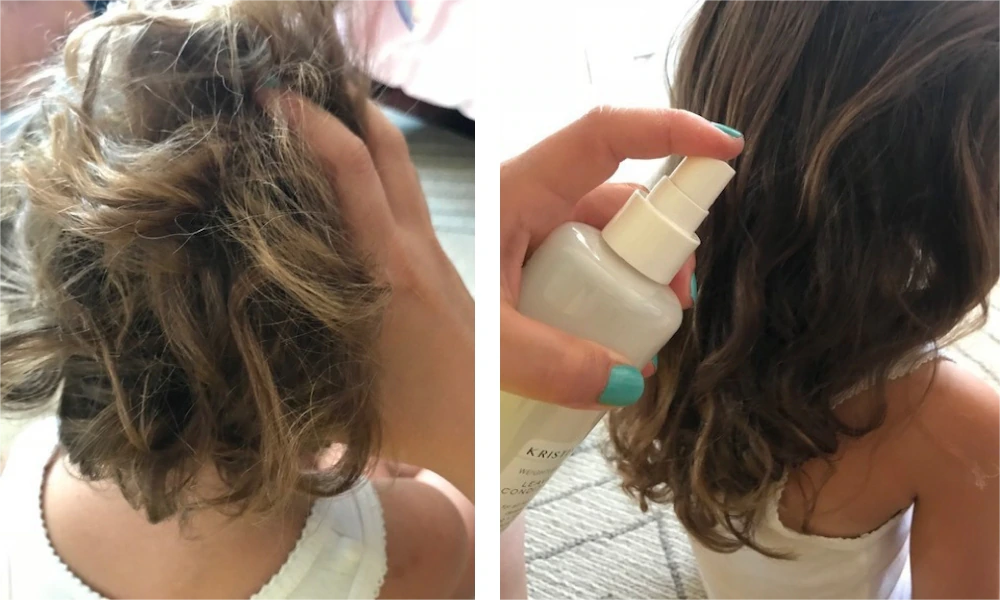
Application Techniques for Best Results
- Hold the wig upright on a wig stand or mannequin head to ensure even product distribution.
- Start by lightly misting the detangling spray from a distance to cover the wig evenly. Avoid saturating the wig, especially the cap area.
- Use a wide-tooth comb or your fingers to gently distribute the product throughout the wig, starting at the tips and working your way up.
- Allow the product to sit for a few minutes to soften tangles before beginning the detangling process.
If the wig has severe tangles, you may need to apply more spray as you work through each section. Be patient and gentle to avoid causing damage during detangling.
Preventing Future Tangles
Maintenance Routines to Minimize Future Tangles
- Regular Brushing
Brush or comb your wig regularly, ideally after every wear, to prevent tangles from forming. Start from the tips and work upwards, being gentle to avoid damage.
- Avoid Wind and Friction
Minimize exposure to wind, friction, and harsh weather conditions that can lead to tangles. Consider wearing a wig cap or securing your wig when outdoors.
- Avoid Sleeping in Wigs
It’s best to remove your wig before sleeping to prevent overnight tangles and matting.
- Protect During Storage
Properly store your wig on a wig stand or head to maintain its shape and prevent tangling while not in use.
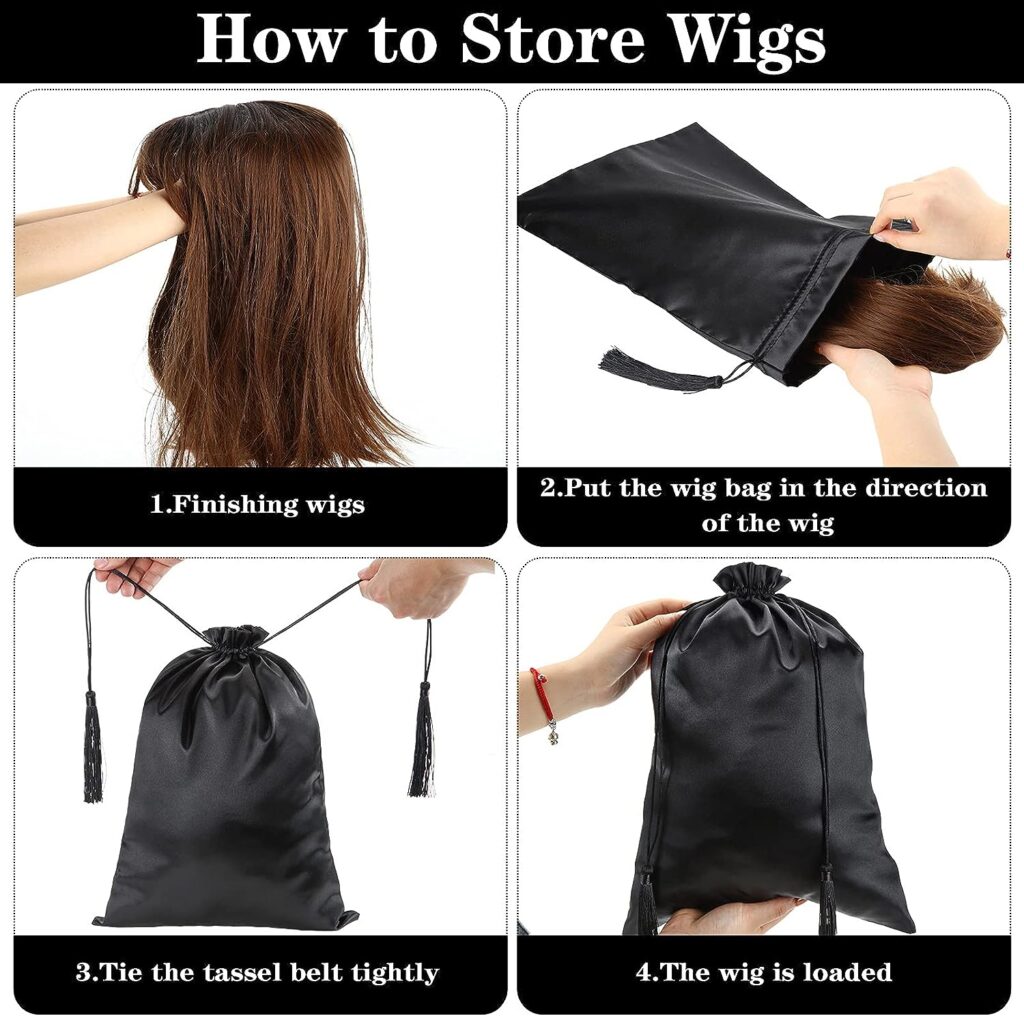
Proper Storage and Care Tips
- Use a Wig Stand
Store your wig on a wig stand or mannequin head to maintain its shape and prevent tangling.
- Keep Clean
Ensure the wig is clean before storing it to prevent dust and dirt buildup.
- Avoid Direct Sunlight
Store wigs away from direct sunlight, as exposure to UV rays can fade color and damage fibers.
- Keep Away from Heat
Avoid storing wigs near sources of heat, such as radiators or space heaters, as excessive heat can affect the wig’s shape and texture.
- Cover with a Hairnet or Bag
Consider using a hairnet or wig bag to protect the wig from dust and maintain its style during storage.
Troubleshooting Common Detangling Challenges
Solutions for Stubborn Tangles
- Additional Detangling Spray
If a specific area has stubborn tangles, apply more detangling spray and let it sit for a few minutes to further soften the knots.
- Finger Detangling
In extremely knotted areas, consider using your fingers to gently work through the tangles before using a comb or brush.
- Start from the Bottom
When dealing with particularly tough tangles, start detangling from the bottom of the hair and gradually work your way up, ensuring you don’t worsen the knots.
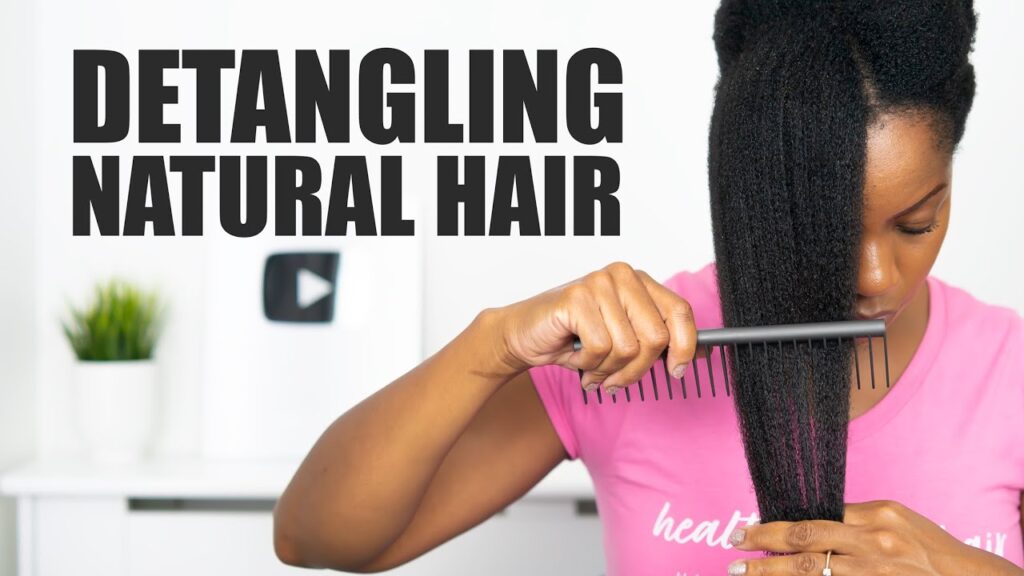
Addressing Frizz and Static
- Anti-Frizz Products
Use anti-frizz products designed for wigs, such as wig-specific serums or leave-in conditioners, to smooth the hair and reduce frizz.
- Anti-Static Sprays
Apply anti-static sprays sparingly to control static electricity that can make the wig hair stand on end. These sprays also add shine and smoothness.
- Humidifier
Consider using a humidifier in your wig storage area, especially in dry climates, to maintain the wig’s moisture and reduce static.
- Fabric Softener Rinse
Dilute fabric softener with water and use it as a rinse for your wig to help control static. Be sure to rinse thoroughly afterward and follow with a conditioning rinse.
Cleaning and Refreshing the Wig
How to Clean the Wig After Detangling
- Prepare a Cleaning Solution
Fill a basin or sink with lukewarm water and add a small amount of wig-specific shampoo.
- Gently Immerse the Wig
Submerge the wig in the water and use your fingers to swirl it around, allowing the soapy water to penetrate.
- Rinse Thoroughly
Drain the soapy water and rinse the wig under cool, running water until all shampoo is removed.
- Condition the Wig
Apply a wig conditioner or leave-in conditioner, avoiding the wig cap area.
- Rinse Again
Rinse the wig thoroughly under cool water to remove the conditioner.
- Blot and Air Dry
Use a clean towel to gently blot excess water from the wig, then place it on a wig stand or mannequin head to air dry. Avoid wringing or twisting the wig.
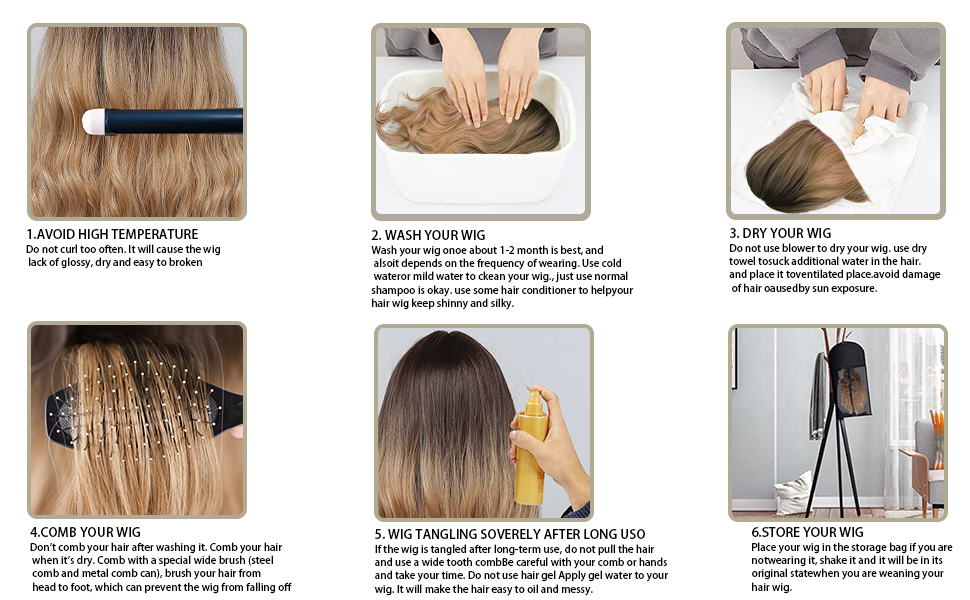
Restoring Shine and Manageability
- Wig-Specific Products
Use wig-specific shine serums or sprays designed to enhance luster and manageability. Apply sparingly to avoid buildup.
- Heat Styling
If your wig is heat-friendly, you can use low heat settings on styling tools to restore shine and smoothness.
- Steam
Consider using a wig steamer to revitalize the wig’s appearance. Steam can help reduce frizz and enhance shine.
- Regular Maintenance
Consistent care and maintenance, including brushing, detangling, and proper storage, contribute to the wig’s overall shine and manageability.
Expert Tips and Additional Advice
Insights from Wig Specialists
- Consult wig specialists for personalized advice on detangling techniques, products, and maintenance routines.
- Wig specialists can offer insights into addressing unique challenges based on your specific wig type, material, and styling preferences.
- They can recommend professional-grade products and provide expert guidance to ensure your wig remains in optimal condition.
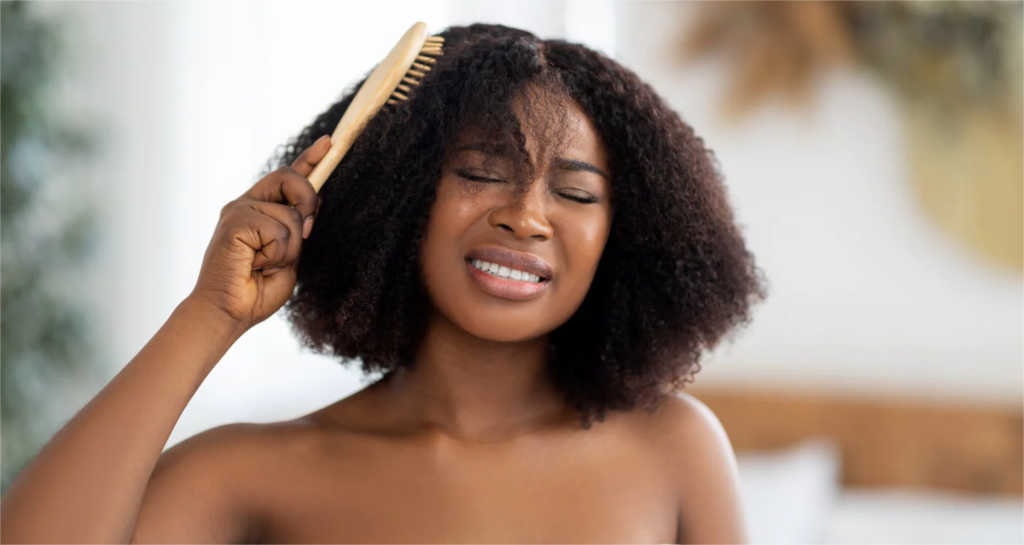
Addressing Detangling Concerns for Specific Wig Styles (Short, Medium, Long)
- Short Wigs
Short wigs often tangle less frequently but can be prone to matting around the nape. Regular, gentle brushing and finger detangling are key.
- Medium-Length Wigs
These offer versatility but require careful attention to avoid knotting. Use a wide-tooth comb and take your time detangling.
- Long Wigs
Long wigs are more prone to tangling, especially at the tips. Start detangling from the bottom and work upwards, using detangling sprays as needed.
Wig specialists can provide tailored advice for each style, ensuring that your specific detangling concerns are addressed effectively.
Conclusion
Tangle-free wigs are a reflection of your self-care and confidence. Proper detangling enhances the wig’s appearance and lifespan. Regular maintenance routines are key to preventing future tangles. By maintaining tangle-free wigs, you ensure they consistently look their best, allowing you to present your most confident self to the world.

